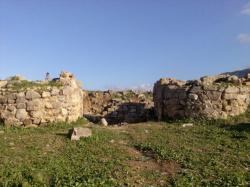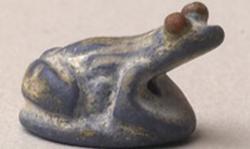18 OCTOBRE
INDI-UNI : ANTHROPOLOGIE - ARCHEOLOGIE
INSCRIPTION 2011 – 2012 COURS A DISTANCE
REGISTRATION 2011 – 2012 ONLINE COURSES
MAROC –  – Tamuda - Le site archéologique Tamuda, situé à 4 km au sud de Tétouan, a été ouvert, lundi, aux touristes et aux chercheurs après des travaux de restauration et de mise en valeur. Il figure parmi les plus importants sites antiques du Royaume aux côtés de Lixus, Volubilis, Cotta et Kouass. En effet, la ville de Tamuda subit vers la fin du premier siècle av. J.-C, une destruction liée à un incendie. Cette destruction, attestée sur plusieurs sites du nord du Maroc, est liée, certainement, aux faits historiques qui ont marqué la Maurétanie à cette époque, à savoir les luttes entre le roi Bogud et le roi Bocchus lors de la révolte des habitants de Tanger en 38 av. J.-C. Tamuda fut détruite définitivement vers l'an 40 ap. J.-C, lors de l'intervention des troupes romaines en Maurétanie et la révolte d'Aedemon.
– Tamuda - Le site archéologique Tamuda, situé à 4 km au sud de Tétouan, a été ouvert, lundi, aux touristes et aux chercheurs après des travaux de restauration et de mise en valeur. Il figure parmi les plus importants sites antiques du Royaume aux côtés de Lixus, Volubilis, Cotta et Kouass. En effet, la ville de Tamuda subit vers la fin du premier siècle av. J.-C, une destruction liée à un incendie. Cette destruction, attestée sur plusieurs sites du nord du Maroc, est liée, certainement, aux faits historiques qui ont marqué la Maurétanie à cette époque, à savoir les luttes entre le roi Bogud et le roi Bocchus lors de la révolte des habitants de Tanger en 38 av. J.-C. Tamuda fut détruite définitivement vers l'an 40 ap. J.-C, lors de l'intervention des troupes romaines en Maurétanie et la révolte d'Aedemon.
http://www.aufaitmaroc.com/actualites/science--environnement/2011/10/11/le-site-archeologique-tamuda-ouvert-au-public
FRANCE – Aulnat - Une découverte qui au départ glace le sang, mais qui au final fascine. Des os humains en pagaille ont été trouvés sur le chantier de construction de deux pavillons dimanche à Aulnat, près de Clermont. C’est ce qu’indique La Montagne ce mardi. Les ouvriers ont d’abord pensé à des ossements d’animaux, avant de réaliser leur découverte. Une centaine de corps au total pourraient avoir été enterrés sur 2000 m2 de surface. Probablement selon les archéologues le résultat d’une famine ou d’une épidémie, peut-être lors du 14e siècle.
http://www.radio-totem.net/actualite/journal/puy-de-dome/article-48202-decouverte-archeologique-a-aulnat/?page=&filtre=all
ALGERIE – Lambaesis - A l'issue de plusieurs fouilles réalisées entre 2006 et 2010 sur le site de l'antique Lambaesis situé dans la commune de Tazoult, dans la wilaya de Batna, d'importantes découvertes ont été enregistrées dont de multiples mosaïques appartenant à la période romaine, selon les déclarations du directeur du Centre national de recherche en archéologie. .Face à ces importantes découvertes, le responsable a indiqué que le site antique de Lambaesis habilite la région à devenir un parc archéologique doté d'un centre muséal. Avant d'arriver à ce stade, il faudra d'abord commencer par «délimiter le site archéologique de Lambèse et étudier les vestiges qui seront répertoriés avec le concours des étudiants de la région formés par des spécialistes. Ancienne capitale des Numides, le site antique Lambaesis semble regorger de trésors enfouis sous terre, ce qui fait de lui une mine d'or pour les chercheurs.
http://fr.allafrica.com/stories/201110170442.html
EGYPTE –  Flinders Petrie - When British Egyptologist Flinders Petrie came to Egypt in 1883 he explored several archaeological sites and revealed some of the country’s ancient history. According to Egyptian law at the time, archaeological dig sponsors had full rights to half of finds, while Egypt retained the other half. Half a century after Petrie’s death, the British Museum in London started cataloguing some of the artefacts he unearthed in Egypt, especially those in possession of the 60 museums involved in sponsoring Petrie’s excavation missions. The exciting news is that early this month they began preparing to catalogue them in an online searchable database format.
Flinders Petrie - When British Egyptologist Flinders Petrie came to Egypt in 1883 he explored several archaeological sites and revealed some of the country’s ancient history. According to Egyptian law at the time, archaeological dig sponsors had full rights to half of finds, while Egypt retained the other half. Half a century after Petrie’s death, the British Museum in London started cataloguing some of the artefacts he unearthed in Egypt, especially those in possession of the 60 museums involved in sponsoring Petrie’s excavation missions. The exciting news is that early this month they began preparing to catalogue them in an online searchable database format.
http://english.ahram.org.eg/~/NewsContent/9/40/24251/Heritage/Ancient-Egypt/Online-catalogue-underway-of-,-of-Petries-archaeol.aspx
ROYAUME UNI - Bredon Hill - Britain's biggest haul of Roman gold, worth millions of pounds, could have been found in Worcestershire by a treasure hunter. Details of the treasure remained sketchy and the identity of the lucky metal detecting enthusiast has not been revealed. But it is understood Worcestershire County Council and the county coroner have been informed because of the potential archaeological significance. The treasure, found at Bredon Hill, the site of an Iron Age fort in Worcestershire, is already being compared with the Staffordshire Hoard, the country's biggest ever find of Anglo Saxon gold. It netted lucky Terry and local farmer Fred Johnson a whopping £1.6 million each after being unearthed in a muddy field at Hammerwich, near Brownhills, West Midlands. Dr Roger White, an expert in Roman archaeology from the University of Birmingham, described the possibility of a new find in Bredon as "exciting".
http://www.telegraph.co.uk/news/newstopics/howaboutthat/8829908/Biggest-haul-of-Roman-gold-in-Britain-could-have-been-found.html
ROYAUME UNI –  Hastings - A new book claims King Harold was defeated by William the Conqueror two miles away from the official battlefield. But does the precise location really matter? As you wander around the fields and lanes of Crowhurst in East Sussex it's not easy to picture one of the bloodiest and most decisive clashes in British history. The village's cow-nibbled pasture and handsome wisteria-lined cottages seem like they could not be further removed from the carnage and devastation of the Norman conquest - or, indeed, from the tourist clamour that surrounds nearby Battle Abbey, where historians have traditionally believed the English army was routed in 1066. But according to new research, Crowhurst may have a darker and more violent history than its placid modern-day appearance may suggest. A book argues that the village and its surrounding fields was the real site of the Battle of Hastings, which placed a foreign ruler on England's throne and, many historians attest, led to the transformation of the national culture and language. It's a development that appears to have taken Crowhurst by surprise. Almost a millennium down the line there are few echoes of a more violent past in this settlement of fewer than 900 souls, populated by sturdy family homes with names like Cedar Dale and Badger's Croft, where the parish council noticeboard seems more concerned with the upkeep of the recreation ground and the village hall committee than the military history of the Middle Ages.
Hastings - A new book claims King Harold was defeated by William the Conqueror two miles away from the official battlefield. But does the precise location really matter? As you wander around the fields and lanes of Crowhurst in East Sussex it's not easy to picture one of the bloodiest and most decisive clashes in British history. The village's cow-nibbled pasture and handsome wisteria-lined cottages seem like they could not be further removed from the carnage and devastation of the Norman conquest - or, indeed, from the tourist clamour that surrounds nearby Battle Abbey, where historians have traditionally believed the English army was routed in 1066. But according to new research, Crowhurst may have a darker and more violent history than its placid modern-day appearance may suggest. A book argues that the village and its surrounding fields was the real site of the Battle of Hastings, which placed a foreign ruler on England's throne and, many historians attest, led to the transformation of the national culture and language. It's a development that appears to have taken Crowhurst by surprise. Almost a millennium down the line there are few echoes of a more violent past in this settlement of fewer than 900 souls, populated by sturdy family homes with names like Cedar Dale and Badger's Croft, where the parish council noticeboard seems more concerned with the upkeep of the recreation ground and the village hall committee than the military history of the Middle Ages.
http://www.bbc.co.uk/news/magazine-15305391
INDE – Dehli - A historical mosque located a stone's throw away from Qutub Minar in Mehrauli was for years a significant example of Lodhi architecture. Called Bagichi ki Masjid because it stood in a wooded patch, the mosque had survived more than 500 years, and continued to be in good repair without the protection of government agencies. In fact, it was widely mentioned by historians as an impressive example of the Lodhi-era mosque. Painted white and green, Bagichi ki Masjid is one of the 15 structures recently identified by the state archaeology department for notification under Delhi Ancient and Historical Monuments and Archaeological Sites and Remains Act, 2004.
http://timesofindia.indiatimes.com/city/delhi/In-Mehrauli-Lodhi-era-structure-goes-to-seed/articleshow/10396328.cms
SRI LANKA – Mannar - India has agreed to provide assistance to restore Thiruketheeswaram Temple in Mannar, one of the holiest Hindu shrines in the North. A detailed report on the restoration of the Thiruketheeswaram Temple was prepared, based on discussions with the Department of Archaeology, Government of Sri Lanka and TTRS, in addition to inputs from their field visit to the Thiruketheeswaram temple. "The historic temple of Thiruketheeswaram is one of the holiest shrines in Sri Lanka and an important symbol of Sri Lanka's cultural Heritage.
http://www.defence.lk/new.asp?fname=20111018_01